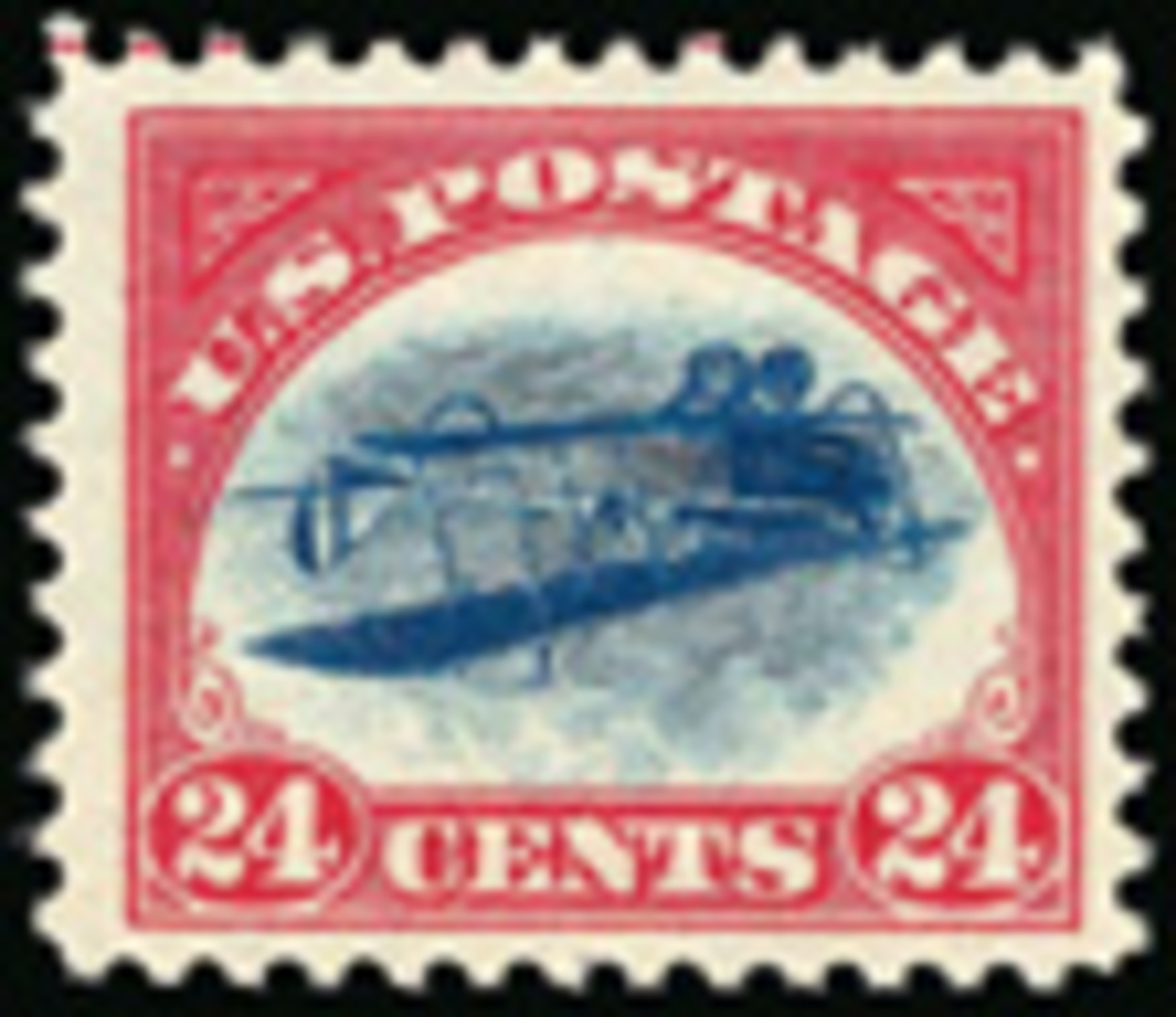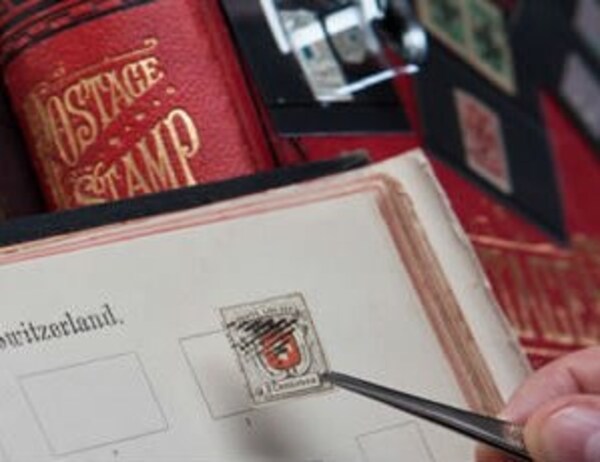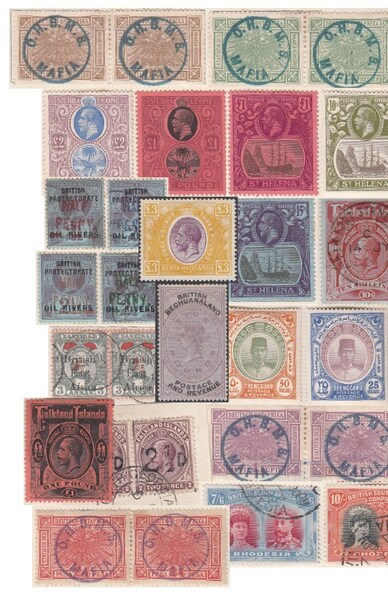One thing that always strikes the layman about stamp collecting is that it is the only acquisitive pursuit that places a premium on imperfection. In any other field, errors and flaws in workmanship would surely be heavily marked down.
There are at least two good reasons why philately should be so keen on errors and varieties. The obvious one is that such phenomena are usually uncommon at the very least and often of immense rarity, and it is the rare and unusual items which can lift a collection out of the ordinary. The less obvious reason is that errors and varieties can teach us a great deal about the way in which stamps are produced. When collectors dig beneath the surface and are no longer content merely to regard a stamp as a pretty picture but wish to analyse the technical aspects of paper, watermark, ink, perforation and printing processes, it is often the imperfections that help us to understand these matters. Deviations from the normal often illustrate technical features very dramatically.
The sudden appearance of a hitherto unrecorded New Zealand error brought these thoughts to mind. It was an example of the 1899 8d postage due carmine and green stamp which had been consigned to Sandafayre for auction. The stamp, found in a collection bought by a philatelist in Scotland, has a double impression of the red numeral of value, and is unused with large part original gum. The stamp has now been given full certification, and will be offered in the sale closing on 2 January 2002, with an estimated value between £2500 and £5000.
In this instance we have a clear case of double printing. Such a bicoloured stamp would have been passed through two presses, one for each colour, but in the case of the red printing the sheet must have gone through the red press twice by mistake. Theoretically there should be more of the 8d stamps with the double printing so now the hunt is on to locate other examples which, like this one, may have been lying undetected in stamp albums for more than a century.
Errors and varieties add spice to the hobby, but what are they and in what ways do they differ from each other? Broadly speaking errors and varieties are anything that deviates from the normal. In the strict sense that they are caused by human or mechanical mistake they are one and the same, although what distinguishes them is really only a question of degree.
To give some examples: a colour shift may be due simply to a faulty alignment of the printing plate or cylinder and the result would be classed as a variety; but where the colour was omitted or printed twice (as in the New Zealand 8d) that would be regarded as an error. The importance or gravity of the mistake is what makes the difference, and because an error is more serious than a variety it tends to get listed in the standard catalogues (as an 'a' number in Gibbons or Scott for example), whereas a variety may only be recorded in the more specialised catalogues and handbooks.
Then again, there are differences in varieties. Flaws are varieties which may be constant, in that they arise from some imperfection in the printing plate and therefore appear on every sheet. But there are other flaws that are quite transient. Confetti flaws appear as tiny white discs in the printing, and are caused by the little pieces of paper punched out by the perforators adhering to the paper as it passes through the press.
Later, these little bits of paper fall off and thus they leave a minuscule bald patch on the surface of the stamp design. These flaws are often quite dramatic in appearance, but because they are not constant they never get catalogue status. Nevertheless, they are worth collecting because of their unusual appearance, and the manner in which they were created is not without interest from the technical viewpoint.
The most prominent errors are those in which one or more colours have been omitted during the printing process, and their omission can sometimes produce spectacular results, either by the total absence of a major part of the design - such as the Queen's head - or by completely altering the colour and appearance of stamps normally printed in multicolour.
Just as stunning are those errors in bicoloured stamps, where one colour is upside down in relation to the other due to the sheet being inserted in the press the wrong way up for the second printing. This results in stamps with inverted centres, a type of error which goes back to the earliest days of two-colour printing, notably the US definitives of 1869. American bicoloured stamps seem to have been particularly prone to this error, as witness the Pan-American Exposition inverts of 1901 and the most famous of all such errors, the Inverted Jenny airmail stamp of 1918.
When somebody discovered a sheet of the Dag Hammarskjold 4c stamp of 1962 with the yellow background inverted, the US Post Office destroyed the rarity (and thus potential value) of this error by reprinting the stamps with the background deliberately inverted. Today, the Hammarskjold error is arguably commoner than the normal stamp!
Inverted overprints or surcharges are not uncommon and arise from the application of additional printing to basic stamps at some later stage, either to change their purpose or commemoration, or to alter their face value. Once you let a printer loose on stamps which have already been produced anything can happen: double overprints, inverted or sideways overprints or double overprints with one of them sideways or inverted are the commonest examples, not to mention missing or misplaced letters or figures.
The other principal type of error concerns perforation, or rather, the lack of it. Such errors may be totally imperforate or partially perforated with either vertical or horizontal perfs omitted. These would be regarded as major errors. On the other hand, stamps in which the perforation is badly aligned, cutting across the design, would be regarded as varieties, and would not even rate catalogue status if the variety was only intermittent. Of course, where the perforation is only very slight out of alignment, the result may be no more than a stamp with the design poorly centred - and in this case the stamp would be regarded by collectors as sub-standard and not worth as much as a normally centred specimen.
There is controversy regarding a type of variety known as an offset. This arises in letterpress and intaglio printing when a sheet straight off the press, with the ink still wet, has another sheet laid on top. This transfers a portion of the wet ink off the front of one sheet and deposits it on to the back of the sheet on top. This creates a mirror image of the sheet on the back, over the gum. Such offsets can be very dramatic in appearance, but because they are the product of a momentary lapse of attention they do not receive catalogue status and their value to the collector is problematical. Offsets should not be confused with stamps which have been printed twice, once on each side. These are just as important as stamps with an inverted centre or a missing colour, because of the manner in which the error occurred, although the fact that they are not as self-evident means that they are invariably catalogued at a lower value than their more spectacular counterparts.
The errors which get catalogue status are 'official' errors, which (theoretically at least) have eventually come into the hands of collectors because initially they were sold over the post office counter in the normal way. This is a bit of a grey area, for, in fact, many errors were noticed by counter clerks checking the stocks received from the postal stores, and then selling them to a dealer 'under the counter'. One of the best-known examples of this is the Dartford Twopenny, a sheet of the 2d light red-brown (SG 543b) which was found by a postal clerk in December 1956. Contrary to regulations, the clerk purchased the sheet and then sold it to a dealer. Interestingly, Gibbons give this error catalogue listing (SG 543bb) but do not price it, and add a footnote explaining that 'in view of this irregularity we do not consider it properly issued'. I suppose that there is always the possibility that other imperforate panes of this stamp may have been sold properly and examples from them may come to light some day.
Most of the really weird errors, however, fall into the category of printer's waste, the imperforates, misperforations and double printings which seem to be inevitable in any printing operation. These are usually spotted by the machine-minder and in most cases are consigned to security scrap, to be duly shredded or incinerated; but there have been many instances in which such misprints have leaked out of the printing works and eventually filter through to the stamp market. Certain countries or periods seem to have been especially prone to this problem - early Spain and Czechoslovakia immediately spring to mind - but the chances are that such dubious material has always escaped destruction. Although it seldom attains catalogue status, printer's waste is not without interest, if only to illustrate all the terrible things that can go wrong in the course of production. And, it has to be admitted, some of it is just as spectacular and eye-catching as the great, genuine errors.


 General
General
 General
General
 General
General